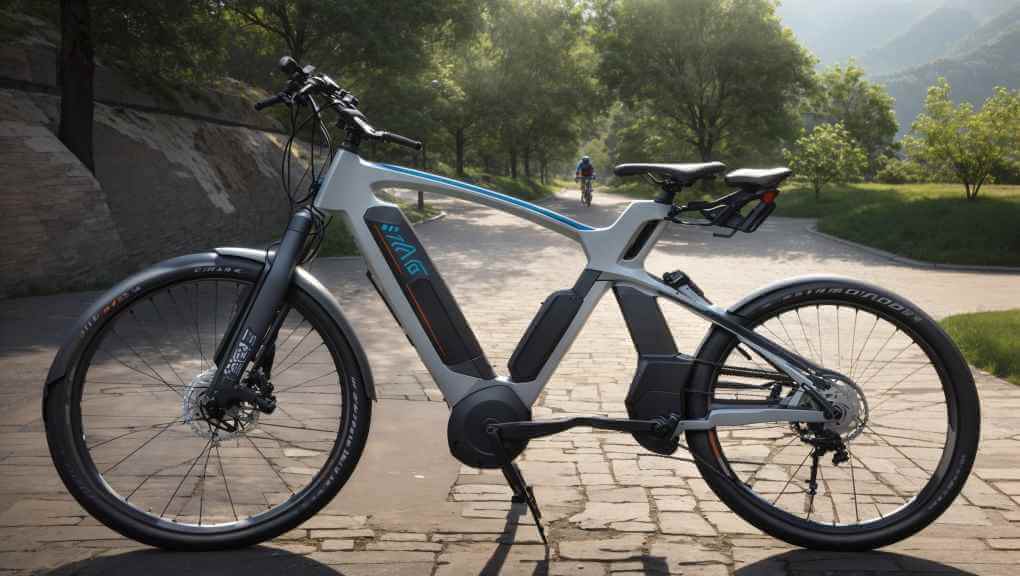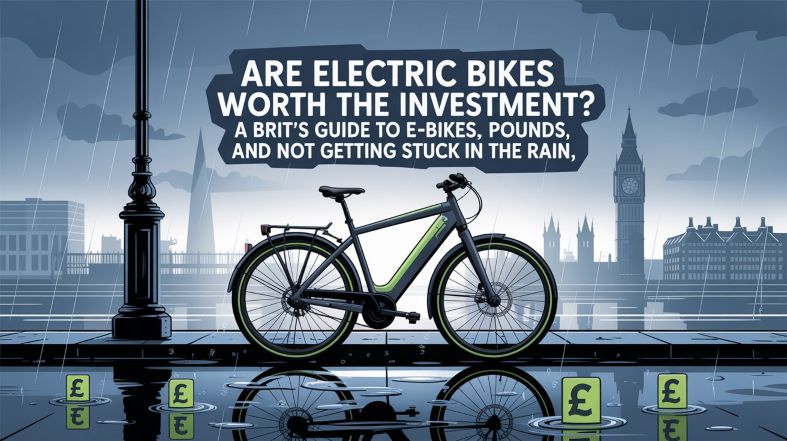An ebike range calculator is a tool designed to calculate ebikes range. It estimates the distance an e-bike can travel based on factors such as battery wattage (AH) and voltage to calculate range however there are other factors that cant be included in this calculation like motor power, rider weight, terrain, and other conditions, including amperage and the impact of wind conditions like headwind, crosswind, and tailwind
To calculate an e-bike’s range, multiply the battery’s voltage by its amp-hours to get the total watt-hours (Wh). Then divide by the estimated power consumption (typically around 20 Wh per mile) to estimate your range in miles.
Another example is a 15-Ah capacity 48V lithium battery.
48v battery x15ah = 720 watts/20 = 36 miles roughly, again taking the amperage and any headwind, crosswind, or tailwind into account.
E-Bike Range Calculator
Setup 1
Below is a table of the most popular voltages and ampere-hours, you can use this table to calculate ebike range mileage, save you having to use a calculator, please give our cost saving calculator a go too to see how much you can save using your ebike.
| Battery (V & Ah) | Battery Capacity (Wh) | Avg. Power Consumption (W/mile) | Estimated Range (miles) |
|---|---|---|---|
| 36V, 7.8Ah | 280.8 | 20 | 14 |
| 36V, 9.6Ah | 345.6 | 20 | 17.28 |
| 36V, 10Ah | 360 | 20 | 18 |
| 36V, 14Ah | 504 | 20 | 25.2 |
| 36V, 17Ah | 612 | 20 | 30.6 |
| 48V, 10Ah | 480 | 20 | 24 |
| 48V, 13Ah | 624 | 20 | 31.2 |
| 48V, 15Ah | 720 | 20 | 36 |
| 48V, 16Ah | 768 | 20 | 38.4 |
| 48V, 19Ah | 912 | 20 | 45.6 |
| 48V, 20Ah | 960 | 20 | 48 |
| 48V, 22Ah | 1056 | 20 | 52.8 |
| 52V, 10Ah | 520 | 20 | 26 |
| 52V, 13Ah | 676 | 20 | 33.8 |
| 52V, 16Ah | 832 | 20 | 41.6 |
| 52V, 19Ah | 988 | 20 | 49.4 |
| 52V, 20Ah | 1040 | 20 | 52 |
| 52V, 22Ah | 1144 | 20 | 57.2 |
There is a more detailed explanation further down the page and If you are new to electric bikes and scooters, you will see that there are many battery options when buying these. You will often see figures like 13ah and 7.8ah. Ah means ampere-hours, which is basically battery power or energy capacity. Amperage is a crucial factor, especially when dealing with headwind, crosswind, or tailwind situations.
1. Battery Capacity (Wh)
The watt-hour (Wh) capacity of your battery should be provided in the e-bike’s specifications. It’s calculated by multiplying the battery’s voltage (V) by its ampere-hour (Ah) capacity: Battery Capacity (Wh)=Voltage (V)×Amp Hours (Ah)Battery Capacity (Wh)=Voltage (V)×Amp Hours (Ah)
Example: If your e-bike battery is rated at 36 volts and 10 Ah: 36 V×10 Ah=360 Wh36 V×10 Ah=360 Wh
2. Average Power Consumption (W/mile)
This can vary based on the bike’s efficiency, terrain, and how much you utilize pedal-assist:
- Typical Consumption: For many e-bikes, the average consumption is around 20 Watts per mile. This can increase with higher usage of motor assistance or in more challenging terrains.
- Personal Measurement: If you want a more accurate number, use a GPS or an app that tracks your ride. Note the battery percentage drop over a certain distance and calculate the Wh/mile based on your battery’s total capacity.
Example Calculation: If you ride 20 miles and your battery level goes from 100% to 50% on a 360 Wh battery: (0.5×360 Wh)/20 miles Wh/mile(0.5×360 Wh)/20 miles Wh/mile
3. Riding Factor
This factor adjusts the theoretical range based on real-world conditions like:
- Terrain: Hilly terrain decreases range, and flat terrain increases it.
- Rider’s Weight and Cargo: Heavier loads decrease range.
- Riding Style: More aggressive use of throttle or higher pedal-assist settings decreases range.
- Weather Conditions: Cold weather can reduce battery efficiency.
Estimating Riding Factor:
- Neutral Conditions: If conditions are average, not particularly hilly or windy, the riding factor could be close to 1.
- Challenging Conditions: For hillier or windier routes, you might adjust this down to 0.7-0.9 depending on severity.
- Ideal Conditions: For very flat and calm conditions, you might adjust this up to 1.1-1.2.
These examples are included in the table at the top of the page.
Some bikes have an ebike distance calculator, or sometimes an Eco tour setting, which considers the grade of the terrain and the riders’ pedalling style. This can often help you extend your range. Calculating range is one of those annoying things you will never have enough of.

What Affects the Range of Your E-Bike?
Assuming you are asking about the average range of an electric bike, it really depends on a number of factors. These include:
- The capacity of the battery – the efficiency of the motor.
- Big hills and elevation are the most fun, but use the most battery power.
- the rider’s weight
- If you are using the throttle or pedal assist,
- Bike weight, if you have a heavy steel frame bike it will use more power than if you have a modern carbon fibre bike or aluminium.
- The weather conditions.
- Tire pressure, low tire pressure creates more resistance to the surface so uses more power.
However, you can expect an electric bike to have a range of anywhere from 20 to 100 miles on a single charge, depending on factors like the riders’ pedalling habits and riding style.
You can also do a basic range calculation on how long your ebike battery will last per ride. For example, you have a 624-watt battery and you have a 250-watt bike, so if you were using the maximum setting on the bike, you can say
624 watts battery divided by 250 motor watts = 2.4 hours
Again, this is a rough estimate and you will not ride at max for a full journey, but it gives you an idea.
I have mostly had hub drives, but it does seem that mid-drive bikes are more efficient. Some of the top manufacturers like Bosch have very efficient motors, which use your cadence and other factors to improve your battery range. Some claim to get 100 miles from 15-amp-hour batteries, which is impressive.
You will always want more range. This is called range anxiety, no matter the battery size you choose. As a general rule, the minimum for a large bike should be around 10.4ah or any smaller, and if you live in a hilly area, it’s going to be poor.
Most UK electric bicycles use pedal assist, which means there is a sensor on the pedals. When you rotate each pedal this sensor tells the motor to assist you, pedal assist is more economical than using a throttle, as this will use the bike at full speed
Pedal assist has different modes for different levels of assistance, the lowest setting using the least battery power, the highest setting using the most, so be aware of this, each will give you an increase of speed and draw more power, and the top setting will if you are in the UK run the bike at top speed 15.6 mph, but draw more energy.
The motor size will also affect the range, however, in my experience, there is not that much difference, but if you use a 250-watt motor it’s going to use less power than a 750-watt motor
What is the average ebike range?
The average range for an electric bike is between 20- 35 miles.
If you have a new electric bicycle, you may well be surprised how poor your range is on your bike, as often the range advertised is totally unrealistic. In fact, sometimes it’s half of what the manufacturer suggested, is what you get in reality.
Some bikes have an ebike distance calculator, or sometimes an Eco tour setting. This can often help you extend your range. Calculating range is one of those annoying things you will never have enough of.
Assuming you are asking about the average range of an electric bike, it really depends on a number of factors. These include:
Other FAQ questions
Does battery capacity affect e-bikes range?
Yes, battery capacity does indeed affect e-bike range. The larger the battery capacity, the longer the range an ebike can achieve. This is because a higher-capacity battery can store more energy, allowing the motor to draw power for a longer period of time. Additionally, a larger battery capacity means that the motor can operate at a lower power output, which results in increased efficiency and extended range. Therefore, when considering an e-bike, it is important to choose one with a battery capacity that aligns with your desired range requirements.
What is the future of ebike batteries
The future is going to be quite exciting as bikes with regenerative braking, like Formula 1 cars, are coming to market. This means when you pull the brake lever it charges the battery for you.
What are the benefits of using an e-bike range calculator?
It’s just a quick way to estimate the range of an ebike, maybe you are a rider considering your first ebike and wish to know the average range. There are some calculators you can now fill out online to help you do this.
How does range affect ebike battery life?
The range of an e-bike battery life is determined by a number of factors, including the type of battery, its capacity, the number of charge cycles, the temperature, and how the battery is used.
The type of battery used in an ebike can affect the range of the battery life. For example, lithium-ion batteries typically have a longer range than lead-acid batteries.




